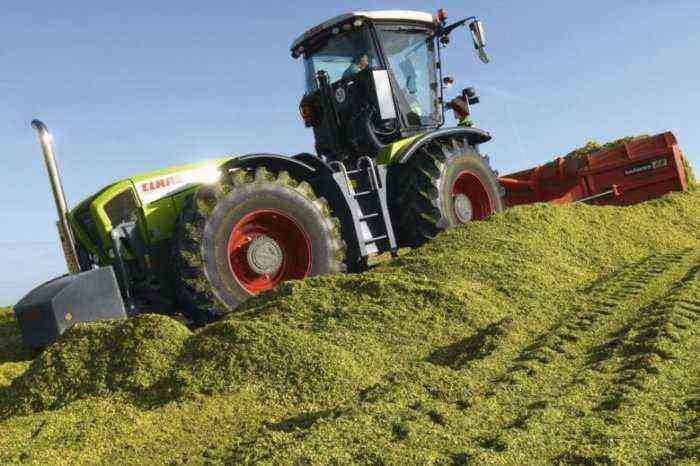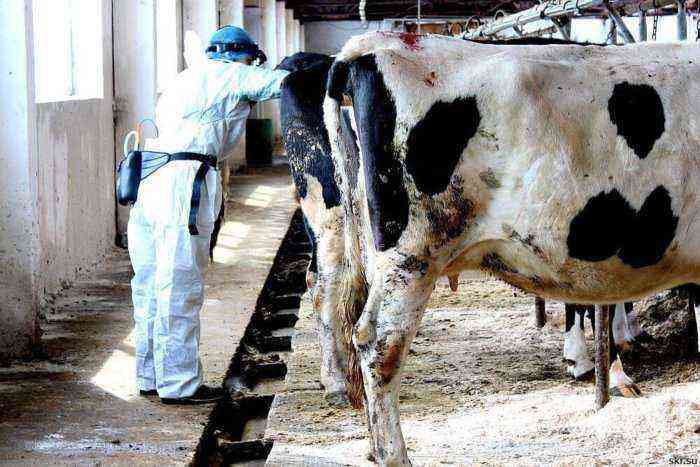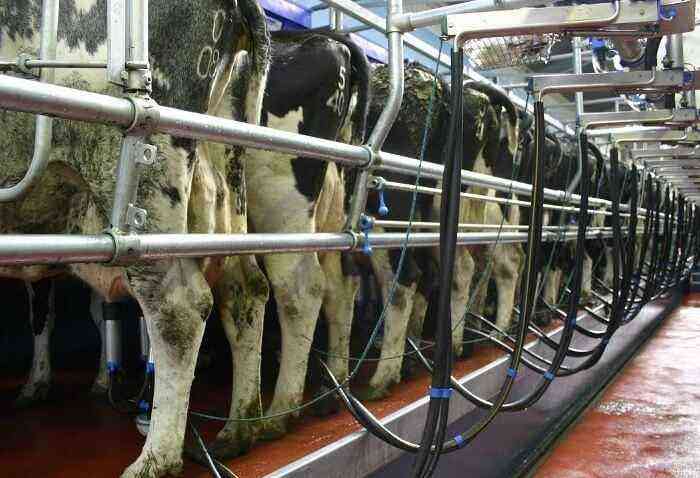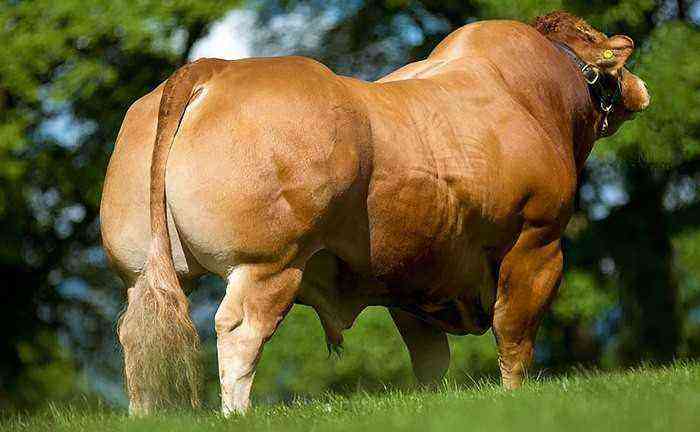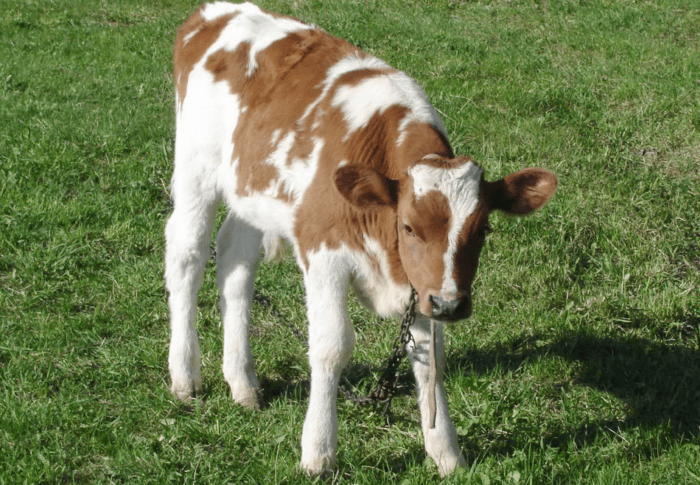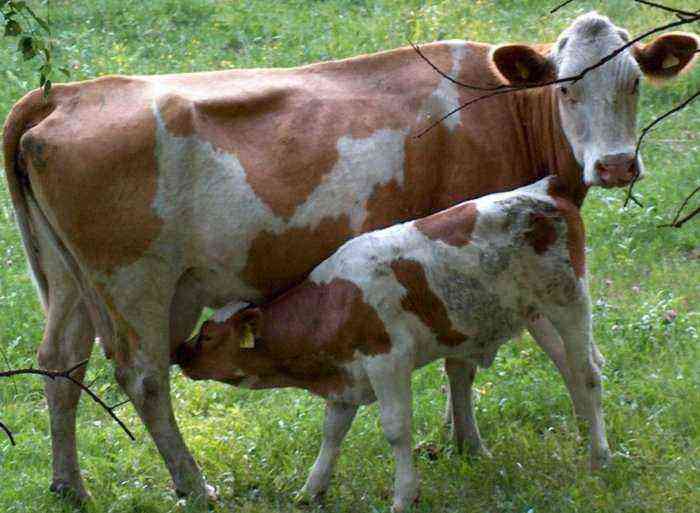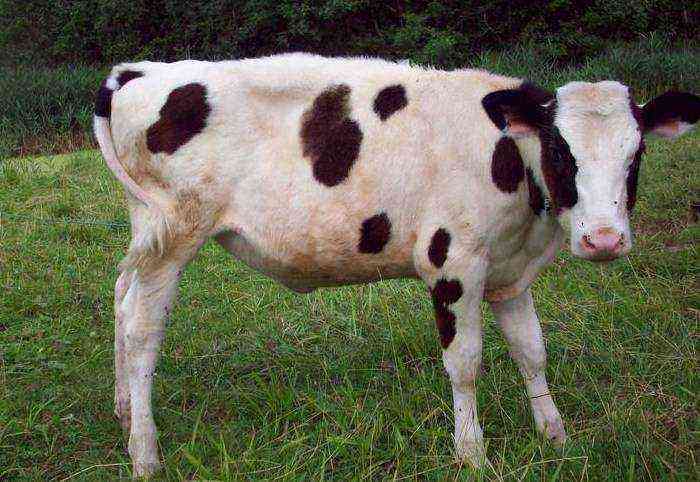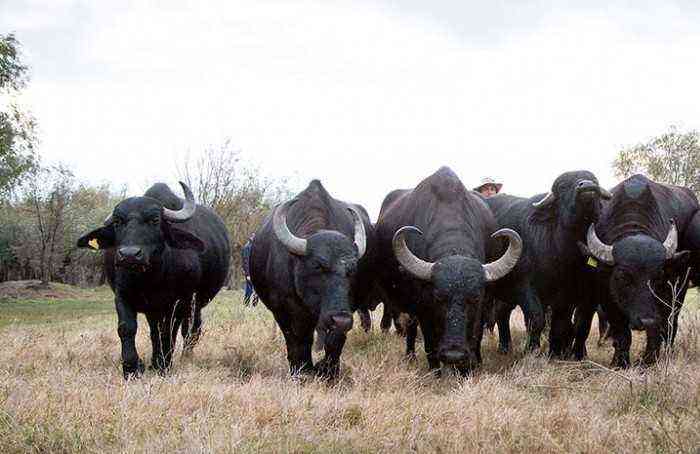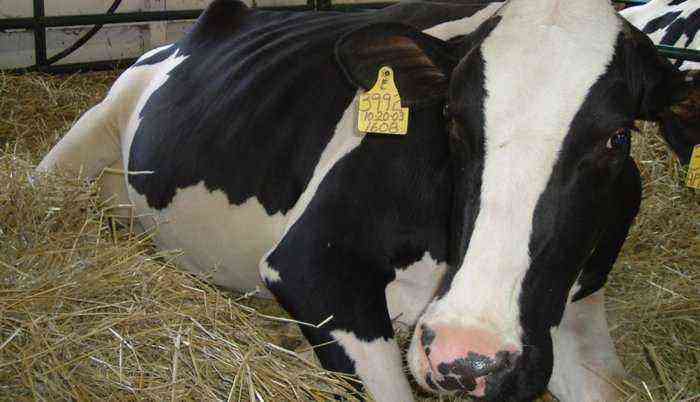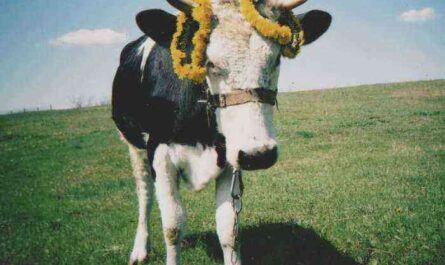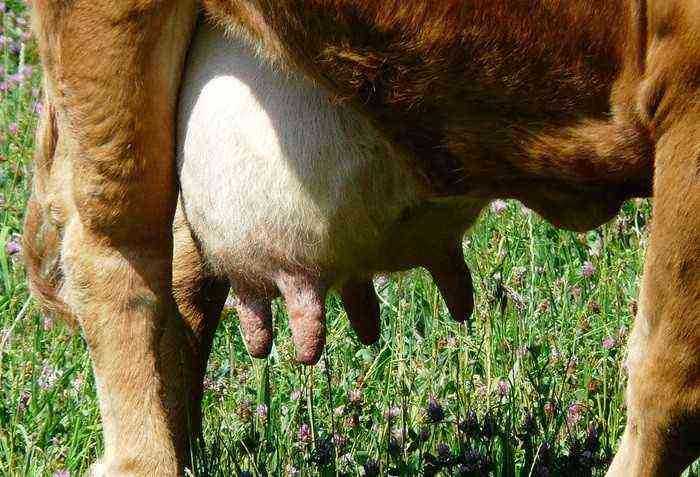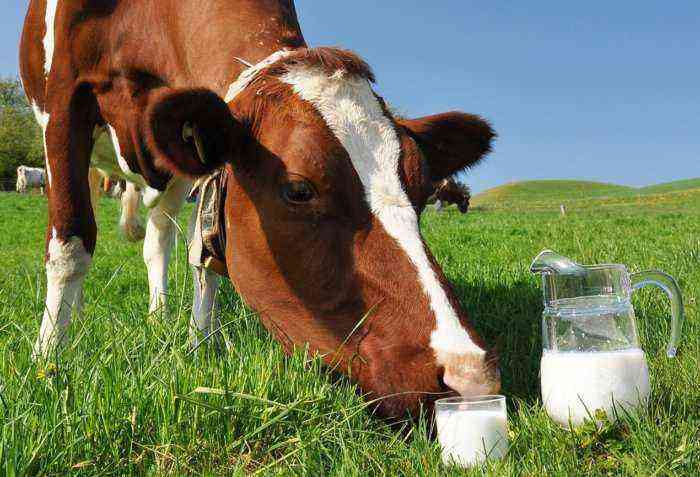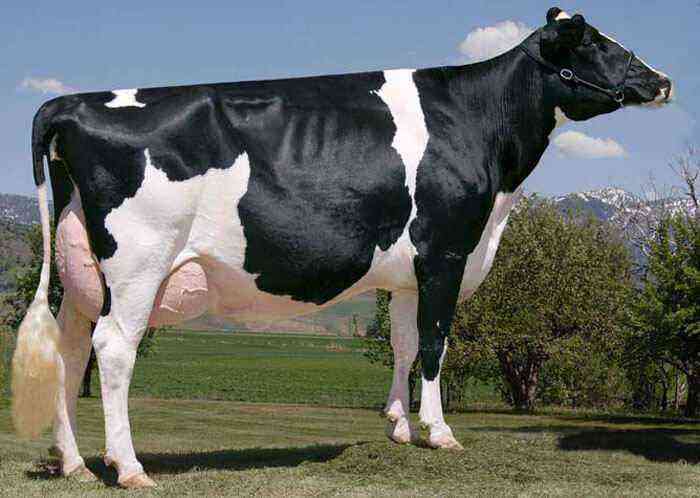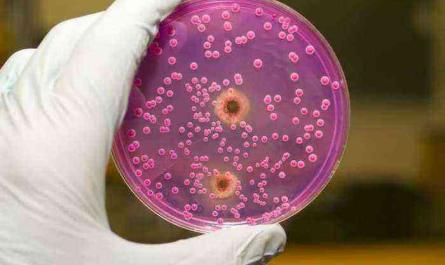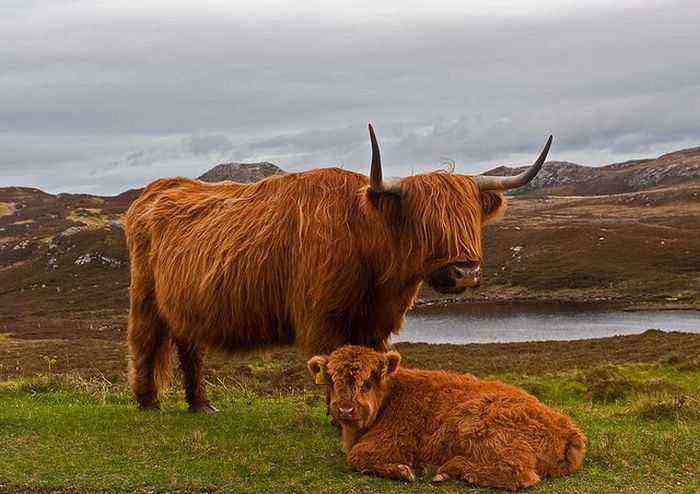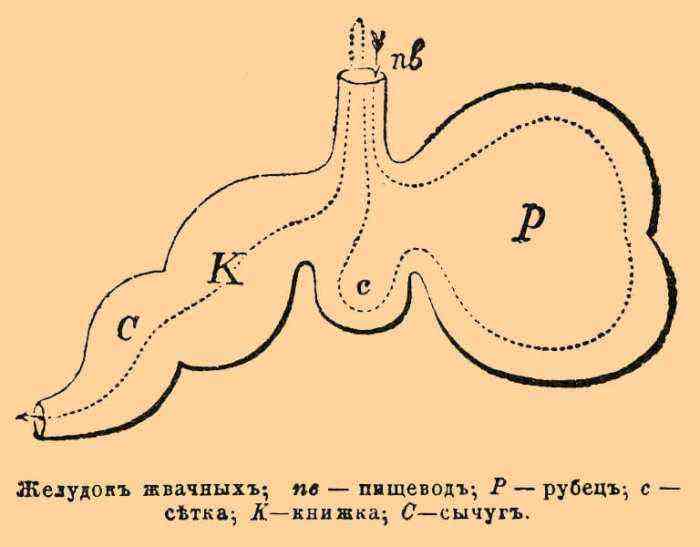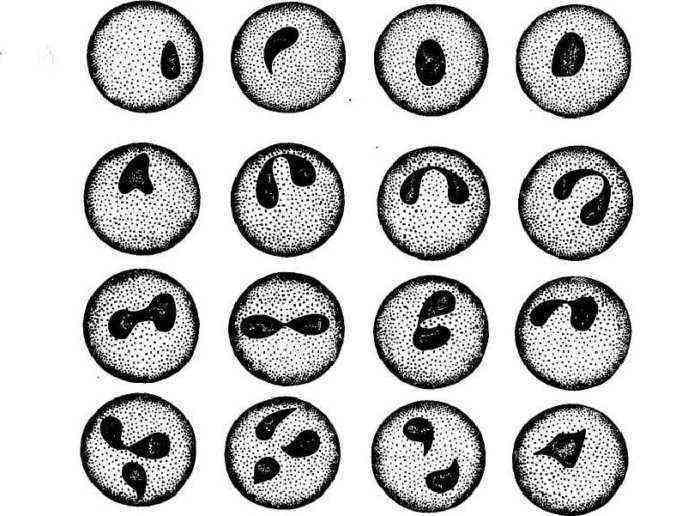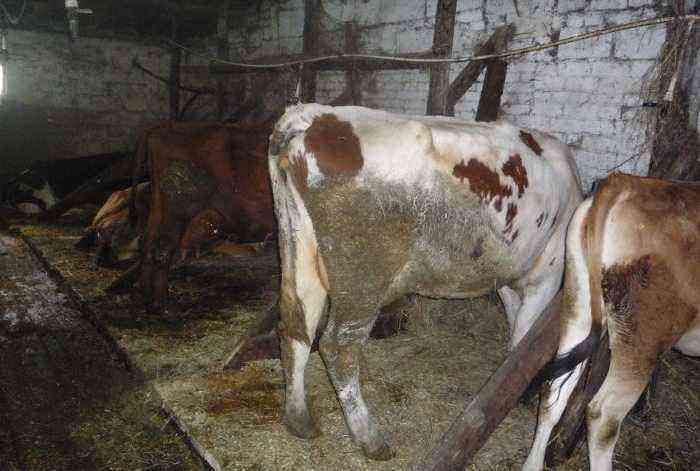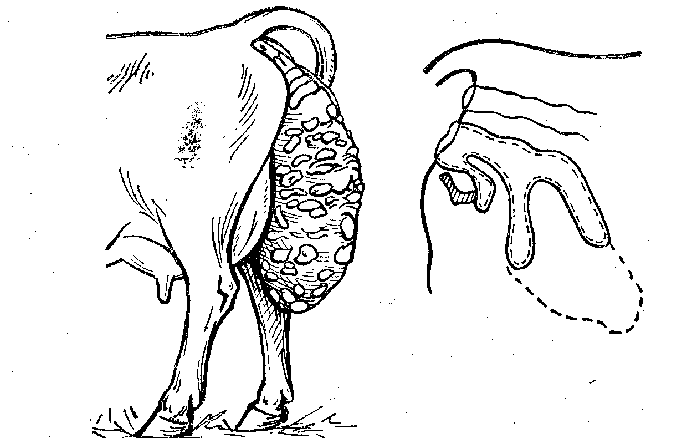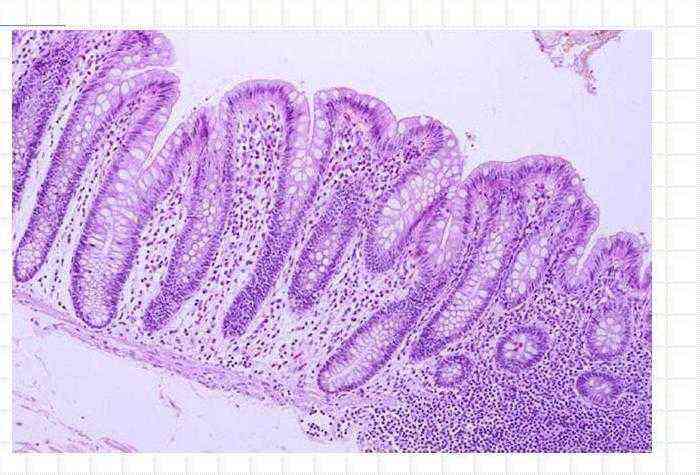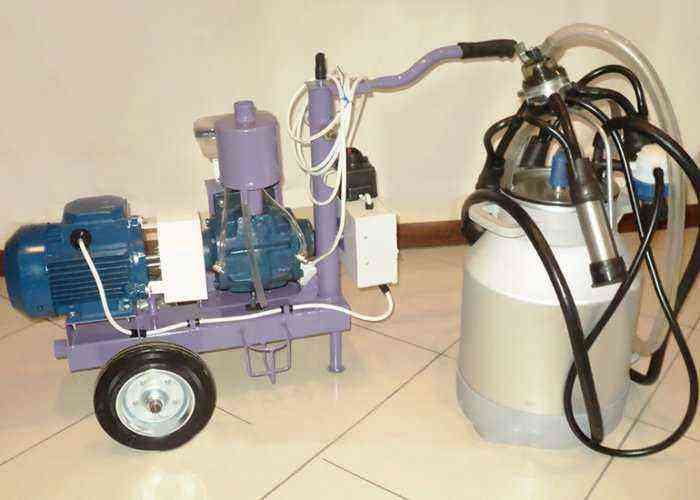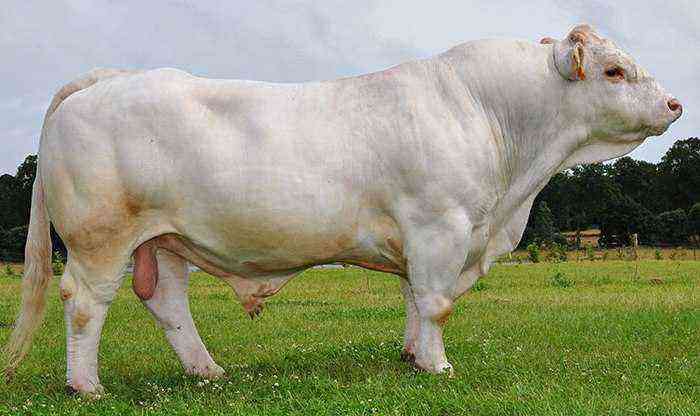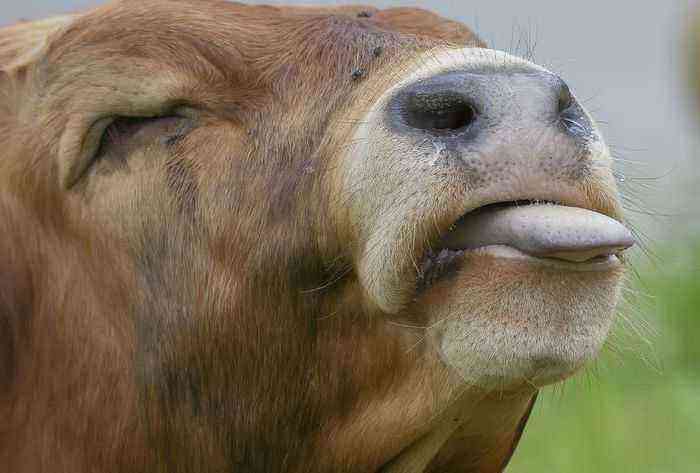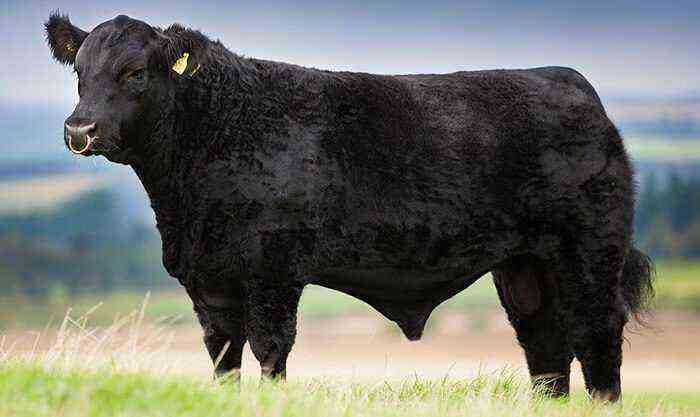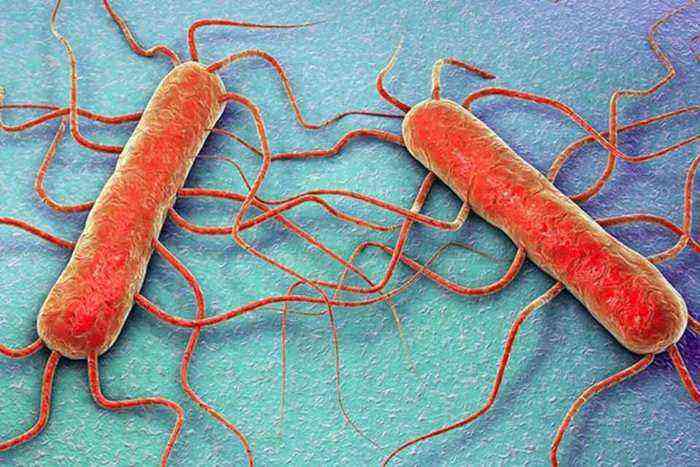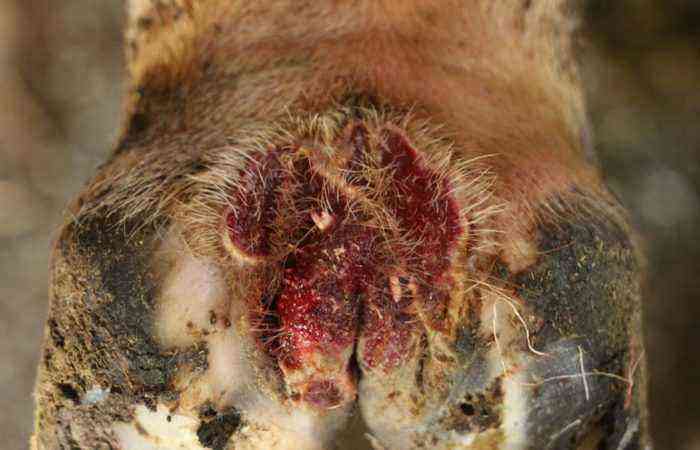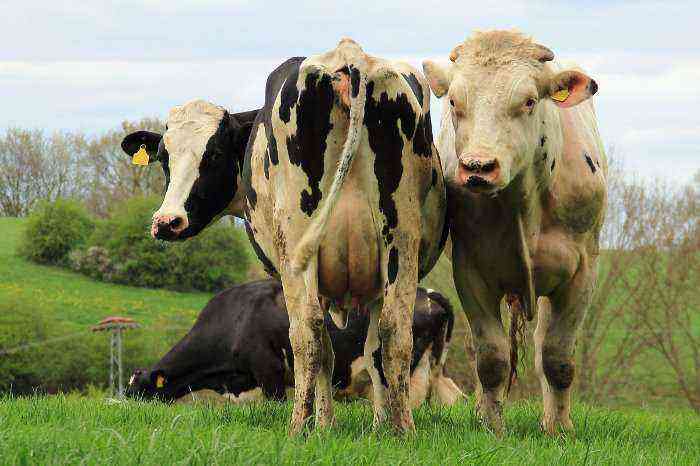Mastitis in a cow is an inflammation of one or more udder lobes, accompanied by swelling, soreness, hyperthermia, suppuration of the mammary gland. This disease occurs most often in the postpartum period, when milk production increases. Mastitis is dangerous, as it can lead to irreversible destructive changes in the mammary gland and even death. Farmers whose profit is directly dependent on the productivity of cows need to have at least a superficial knowledge of the symptoms and causes of mastitis.
mastitis in a cow
Causes
Inflammation of the milk tank always occurs against the background of a decrease in the overall resistance of the animal’s body. After calving, the cow is weakened, so any provoking factors can aggravate her health. The origin of mastitis in 85% of cases is of an infectious nature, that is, pathogenic bacteria enter the udder in various ways:
- Staphylococci.
- Streptococci.
- E. coli.
- Pseudomonas, etc.
Ways of penetration of infection – through the papillary canal, through the wound, through the blood from other organs, for example, with endometritis.
Consider the main causes of mastitis in cows:
- Failure to comply with hygiene standards during milking.
- Violation of milking technique.
- Unfavorable conditions for keeping cows – a cold, damp room, lack of bedding, unsanitary conditions.
- Abrasions, udder injuries, insect bites, teat cracks.
- Incomplete emptying of the mammary gland during milking.
Attention! The root cause of the development of mastitis is the low immunity of the animal. If a cow has a poor diet, gradually her immune system weakens and cannot resist the attacks of harmful bacteria.
Symptoms and Diagnosis
Inflammation of the udder can proceed in different ways, depending on the form of the disease, but in almost every case the following symptoms are present:
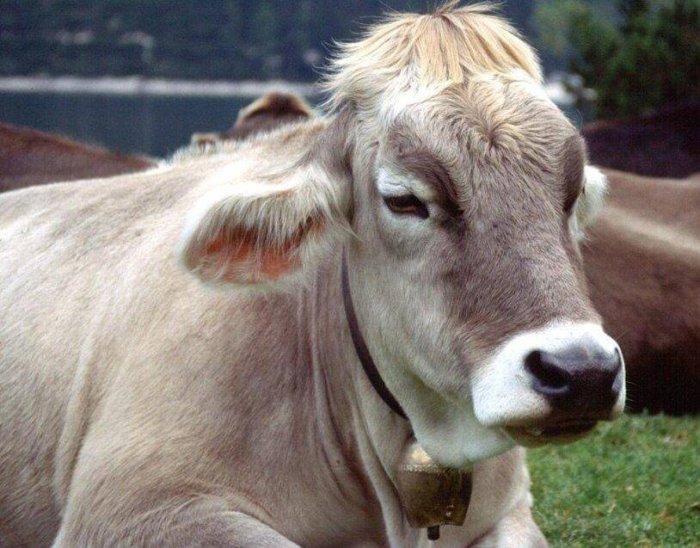
The cow is oppressed
- The cow is oppressed.
- There is no appetite.
- The udder is edematous, painful, hot, one or more of its lobes are enlarged.
- In some cases, the body temperature rises.
- Milk changes texture, taste and color (sometimes there are traces of blood and pus in it).
- Seals and knots are felt in the udder.
- In some forms of mastitis, a change in the color of the skin of the mammary gland is noted – spots appear on it.
Diagnosis of mastitis in a cow is carried out by a veterinarian. Based on clinical data, he excludes certain types of inflammation. To differentiate the form and type of mastitis, the presence or absence of purulent contents of the mammary gland, as well as the localization of the focus of inflammation – in the alveoli, milk ducts or other parts of the udder, are taken into account. Laboratory studies of milk samples are important. They help to identify the causative agent of the disease, which allows you to choose the right antibiotics and prescribe an effective treatment.
Types of mastitis in cows
There are many types of mastitis, each of which has its own symptoms and features of the course of the disease:
- subclinical;
- Chronic;
- catarrhal;
- Purulent;
- Purulent-catarrhal;
- Serous;
- Fibrous;
- Hemorrhagic;
- Gangrenous.
Consider each type in detail, because in each case, the treatment of mastitis will have its own scheme.
subclinical
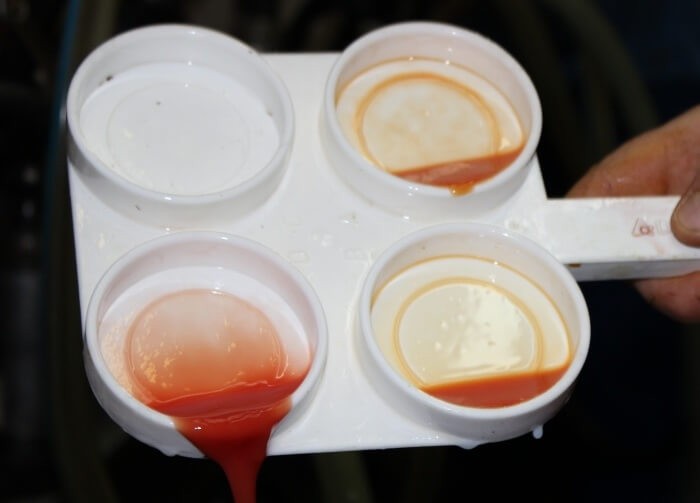
Signs of subclinical mastitis
This type of mastitis is hidden. It can only be recognized by analyzing milk. It is possible to detect some changes in the udder by deep palpation, but not always. In this case, the veterinarian will pay attention to the presence of small seals or nodules in the mammary gland, thickening of the walls of the nipple or narrowing of the lactiferous duct. To diagnose this form of mastitis, special testers are used, as well as the method of settling milk.
Attention! Hidden mastitis can subsequently take on other forms, so it is important to diagnose the condition of the udder regularly so as not to trigger inflammation.
Chronic
The chronic form of mastitis also goes unnoticed for a long time – there are no visible signs of the disease. If the cow’s body manages to independently overcome a short-term acute inflammation of the udder, resulting in an apparent recovery, the disease takes on a chronic form. Deviations can be diagnosed by milk, using testers and the settling method. In chronic mastitis, the milk becomes more watery and may contain fragments of flakes. If you do not treat the cow, periodically the disease will worsen.
Catarrhal
Catarrhal mastitis is characterized by inflammation affecting the glandular epithelium of the milk tank in one or two lobes. In this case, exudate is formed, which gradually clogs the milk ducts. In the first few days, the disease does not manifest itself in any way. In the future, the consistency of milk changes – its first portions usually contain clots of casein, and the consistency becomes watery. In the future, nodules the size of a nut can be found in the udder. The nipples are compacted, and the milk yield is reduced.
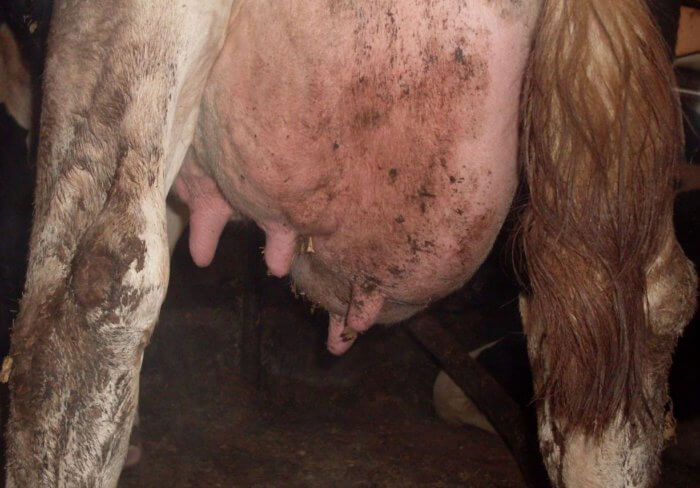
catarrhal mastitis
Purulent
With purulent mastitis, purulent exudate is formed in the mammary gland. It can accumulate inside – in the alveoli and milk ducts, then we are talking about a purulent-catarrhal form of the disease, which we will discuss below. Other types of purulent inflammation of the udder:
- Abscess.
- Phlegmon.
With an abscess, abscesses form on the mammary gland, which eventually increase in size and merge together. At the same time, the udder is very painful, the animal has a fever, there is no appetite. The prognosis is unfavorable, because the affected parts of the udder in this course of the disease undergo significant destructive changes. As a result, part of the gland may stop functioning. Cows with low immunity may develop metastases in other vital organs.
Phlegmon is another form of purulent mastitis. It is characterized by the formation of a diffuse purulent focus of inflammation of the connective tissue of the mammary gland. The cow is strongly depressed, the body temperature reaches 41 degrees, the udder is dense, painful. If it is possible to express some milk from the affected part, then it is gray in color and contains numerous clots.
Attention! The prognosis for udder phlegmon is in most cases unfavorable.
Purulent catarrhal
This type of purulent inflammation develops with catarrhal lesions of the alveoli and ducts. As a rule, one or two quarters of the milk tank is affected. The udder swells, swells, becomes hard and hot. There are common signs of oppression – weakness, lack of appetite. The body temperature rises.
Attention! Purulent-catarrhal mastitis, if the animal is not helped, becomes chronic within 3-4 days.
Serous or acute serous
With serous mastitis, part or half of the gland becomes inflamed. There is an effusion of serous contents into the connective interalveolar tissue, as well as into the subcutaneous tissue. The milk tank strongly swells, turns red, there is severe pain.
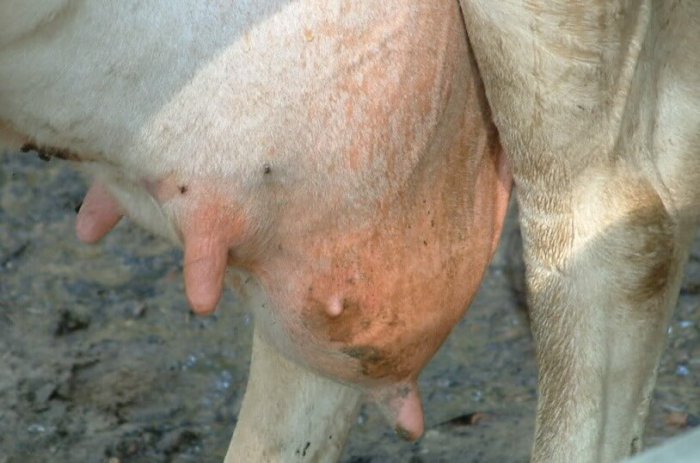
With serous mastitis, half of the gland becomes inflamed
In the future, as the disease develops, damage to the alveoli and milk ducts is possible.
Reference. In the serous form of the disease, milk acquires a bluish tint.
Fibrous (fibrinous)
This form of the disease develops mainly from catarrhal. It is characterized by the release of fibrin protein in the udder tissue, which accumulates in the interalveolar spaces and between the milk ducts. As a result, blood circulation is disturbed in the tissues, which can lead to their necrosis.
Attention! Fibrinous mastitis is often complicated by gangrene and metastases to vital organs. The prognosis is unfavorable.
Hemorrhagic
Hemorrhagic mastitis is characterized by thinning and increased permeability of the vascular walls of the mammary gland. Blood seeps into the tissues of the udder, into the milk ducts, forming clots. This leads to blockage of the ducts. A characteristic feature of this form of the disease is that the milk turns red or pink, and purple spots form on the skin of the gland.
Gangrenous
The most severe form of mastitis is gangrenous. It develops as a result of circulatory disorders. The tissues of the affected lobe become dead, acquiring a blue-black color. The contents of the udder are fetid, green, brown in color with protein flakes. The prognosis is unfavorable – a fatal outcome is possible due to the spread of infection to other organs.
Treatment and prevention of mastitis in cows
The treatment regimen for mastitis in cows differs, depending on the form of the disease. However, antibiotic therapy plays a major role. The animal is given complete rest, the supply of juicy food and drink is reduced in order to restrain the production of milk. In most cases, the following procedures are effective:
- Massage followed by decanting the contents of the gland.
- Rubbing warming and disinfecting ointments.
- The imposition of compresses, poultices.
- Lavage of the milk ducts with solutions of antibiotics with novocaine.
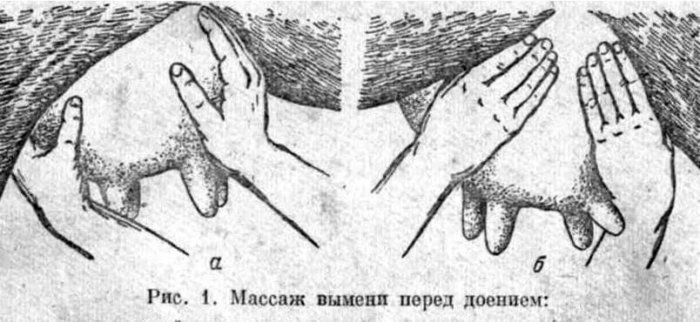
Udder massage
Treatment of mastitis in cows with antibiotics is mandatory, it helps to fight the causative agent of the disease. Antibacterial drugs of the penicillin series or a wide spectrum are used. They are administered intramuscularly. The dose is calculated based on the weight of the animal. Treatment can last up to 7 days.
Prevention of mastitis in cows helps to avoid the development of the disease, it includes:
- Keeping cows clean and warm.
- Udder hygiene – it must be washed and wiped before and after pumping.
- Compliance with the technique of manual and hardware milking.
- Vitamin therapy to increase the body’s resistance.
- Timely diagnosis of mastitis and inflammatory diseases of other organs.
- Proper launch of the animal.
- Complete expression of milk from the lobes of the mammary gland.
Mastitis is not to be taken lightly. Even slight hypothermia can lead to serious inflammation, which in the future can lead to irreversible processes in the mammary gland and even death of the animal. That is why timely diagnosis and proper treatment are important. At the slightest suspicion of mastitis in a cow, you need to test the milk and invite a veterinarian to examine the animal.
